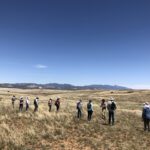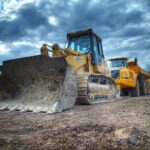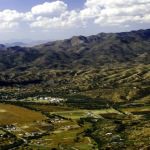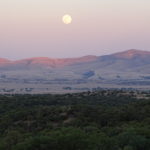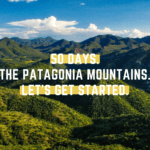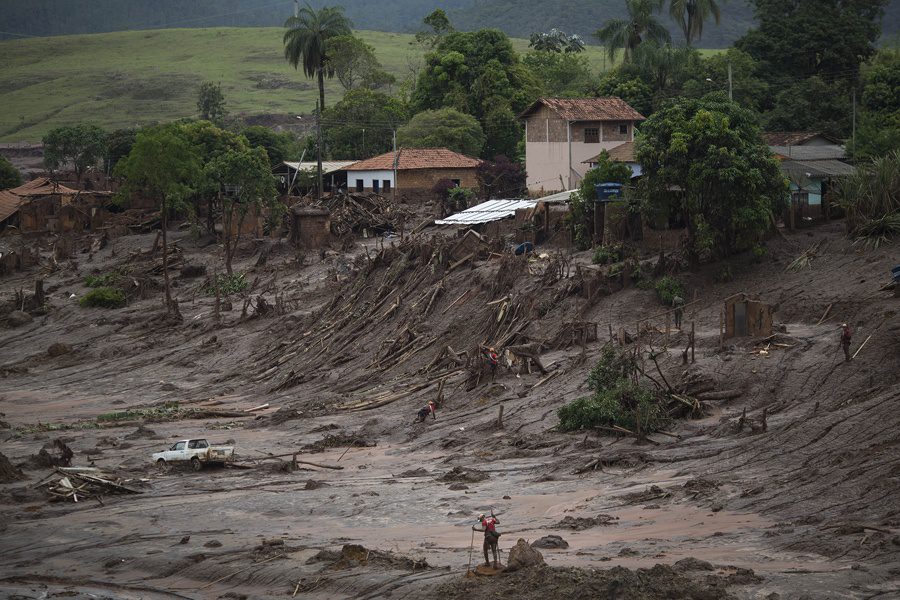
Nov 11, 2015 | Blog
New research validated: mining disasters on the rise because of modern mining techniques
EARTHWORKS News Release
Washington, D.C. — A mine waste dam at the Germano open-pit iron ore mine in Brazil’s state of Minas Gerais breached Thursday, flooding the downstream area with mining waste and causing fatalities. The Germano facility is co-owned by two of the world’s largest mining companies, Brazilian Vale SA and Anglo-Australian BHP Billiton.
A recent report, The Risk, Public Liability & Economics of Tailings Storage Facility Failure, demonstrates that catastrophic mine waste failures are increasing in frequency and severity because of — not in spite of — modern mining techniques, and will continue to do so until regulators and mining companies take active steps to prevent them.

Rescue workers walk at the site where the town of Bento Rodrigues stood after two dams burst on Thursday, in Minas Gerais state, Brazil, Sunday, Nov. 8, 2015. Brazilian rescuers are looking for people still listed as missing following the burst of two dams at an iron ore mine which sent viscous red mud, water and debris flooding into the town, flattening all but a handful of buildings and killing dozens. (AP Photo/Felipe Dana)
“Our research shows that more mining waste disasters like Brazil’s Germano spill are inevitable,” said David Chambers, report co-author and director of the Center of Science in Public Participation. He continued, “If mining practices continue as usual, we are going to see more severe spills, more frequently. These spills each will cost the public hundreds of millions to billions of dollars to clean up – if cleanup is possible at all. And sometimes, like the Germano spill, they will cost people’s lives.”
Chambers’ report, co-authored with Lindsay Newland Bowker, was researched in response to the 2014 Mount Polley mine waste disaster in British Columbia, another waste impoundment failure which released roughly 24.4 million cubic meters of mine tailings waste into the Fraser River watershed. An expert panel commissioned by the BC provincial government recommended the global mining industry make significant changes to how it handles mining waste. To date those recommendations have been largely ignored.
“The Mount Polley disaster should have been a wake-up call to the mining industry,” said Earthworks’ mining director Payal Sampat. She continued, “But mining companies and government regulators failed to act – and tragically, now mining spills are killing people as well as wildlife. We cannot afford to wait for the next mining disaster before we protect communities and the environment from risky mining practices.”
There are 839 mining waste tailings dams in the United States and approximately 3,500 around the world, according the U.S Army Corps of Engineers and the United Nations, respectively. Large dams built to contain mining waste, among the largest structures in the world, must stand in perpetuity. Yet there is no federal agency in the U.S., nor global entity, responsible for oversight of mining waste tailings dam safety. 38 civil society organizations around the world urged the United Nations Environment Programme (UNEP) to push companies and national governments to address the threats mine waste dams pose. UNEP Director Achim Steiner responded with plans to review current guidance and work with stakeholders to examine next steps. Efforts are also underway to pressure US and Canadian governments to take stock of mining waste tailings dams.
Primary findings of The Risk, Public Liability & Economics of Tailings Storage Facility Failure include:
- The rate of serious tailings dam failures is increasing. Half (33 of 67) of serious tailings dam failures in the last 70 years occurred in the 20 years between 1990 and 2009.
- The increasing rate of tailings dam failures is propelled by, not in spite of, modern mining practices. The increasing rate of tailings dam failures is directly related to the the increasing number of TSFs larger than 5 million cubic meter capacity necessitated to allow the economic extraction of lower grades of ore.
- 11 catastrophic failures are predicted globally from 2010 to 2019. Predicted total cost of these 11 failures is approximately $6 billion.
- The average cost of the these catastrophic tailings dam failures is $543 million. Regulator attempts to recoup cleanup costs from mining operators reveal — through court records and other official documents — dollar totals for cleanup and recovery.
- Mining companies cannot afford, and cannot secure insurance to cover, the costs of catastrophic failures: Losses, both economic and ecological, are in large part either permanent and non-recoverable, or recovery — to the extent physically possible — is funded by public monies.
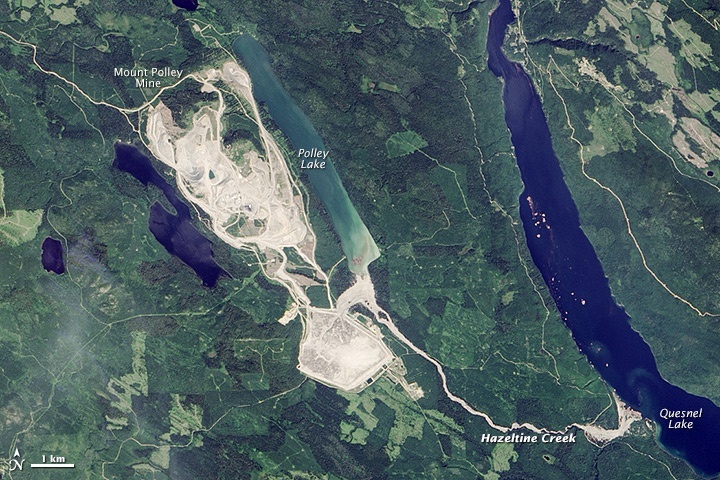
Mar 19, 2015 | Blog
EARTHWORKS PRESS RELEASE
Letter from community and enviro groups around the country urges EPA, Forest Service, BLM to respond to lessons of Mount Polley mine disaster findings
A coalition of more than 40 environmental and community groups today sent letters to the U.S.Environmental Protection Agency (EPA), Bureau of Land Management (BLM), and U.S. Forest Service (USFS) urging they take immediate action to investigate threats posed by mine waste dams and impoundments in the United States.
In the wake of the August 2014 Mount Polley mine waste disaster in Canada which released roughly 24.4 million cubic meters of mine waste into the Fraser River watershed, a government-commissioned independent investigative panel determined that current global standard practice for mine waste disposal is fundamentally flawed and that future failures at other mines are simply a matter of time. To date, U.S. regulators have taken no action to assess the risks posed by mines in the U.S.

Aerial view of the earthen dam at Mount Polley Mine in British Columbia that breached on August 4, 2014, sending contaminated water into nearby lakes.
“The most important finding of the Mount Polley investigation is that catastrophic mine waste dam failures can and will happen anywhere, unless we apply the lessons of Mount Polley and act to prevent them,” said Dr. David Chambers, president of the Center for Science in Public Participation. He continued, “Preventing these failures is critical to protecting the public from environmental and financial impacts, since there is no financial surety for catastrophic tailings dam accidents.”
“The best available science now warns that business as usual at modern mines means more mine waste catastrophes. That’s unacceptable,” said Jennifer Krill, Executive Director of Earthworks. “To protect clean water, communities and the environment, we need regulators in the United States to act on the lessons learned from the Mount Polley disaster.”
The government-commissioned, independent investigation into the Mount Polley dam failure concluded that the dam design was at fault, and predicted that an estimated 2 additional tailings dam failures could occur every 10 years in British Columbia if business continues as usual.
There are 839 tailings dams in the United States according the U.S Army Corps of Engineers. Mining companies worldwide use Knight-Piésold, the engineering firm that designed and built the tailings dam that failed at Mount Polley — including at the proposed Pebble copper-gold mine in the watershed of Alaska’s Bristol Bay.
Large tailings dams built to contain mining waste, among the largest structures in the world, must stand in perpetuity. Yet there is no federal agency in the U.S., nor global entity, responsible for oversight of tailings dam safety. The few tailings dam safety and construction requirements that exist were developed from those intended for water retention dams, not for mine tailings dams.
Farther south, the Mount Polley disaster has spurred worries about a proposed silver mine on U.S. Forest Service land only about 7 miles upstream of the tourist town of Patagonia, Arizona.
“Our town’s entire water supply is from groundwater, and the tailings dam would feed into the creek running through the town,” Coordinator Wendy Russell of the Patagonia Area Resource Alliance. “We already have acid leaks from historical mines,” she said. “We don’t need a Mount Polley here.”
FOR MORE INFORMATION
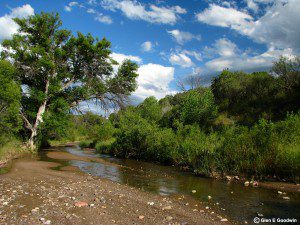
Oct 28, 2014 | Blog
Peer-reviewed report outlines Hermosa mine’s risks of water consumption, perpetual water pollution to Patagonia area
Patagonia Area Resource Alliance
Earthworks
October 28, 2014
 Patagonia – The Hermosa silver mine proposed inside Patagonia, Arizona’s Municipal Supply Watershed could deplete the town’s drinking water and perpetually contaminate area groundwater with acid mine drainage, according to a new peer-reviewed report.
Patagonia – The Hermosa silver mine proposed inside Patagonia, Arizona’s Municipal Supply Watershed could deplete the town’s drinking water and perpetually contaminate area groundwater with acid mine drainage, according to a new peer-reviewed report.
Reviewed* by a USGS scientist and released by the Patagonia Area Resource Alliance and Earthworks, the study also concludes that drinking water wells of surrounding residents are also threatened.
“A mine that threatens our town’s drinking water is a mine that shouldn’t be built,” said Wendy Russell of the Patagonia Area Resource Alliance. She continued, “In Arizona, water is more precious than silver, and especially so after more than a decade of drought.”
Proposed by Canadian exploration company AZ Mining Inc (Wildcat Silver) – a company with no experience operating a mine – Hermosa is proposed at a time when Patagonia is already concerned with dropping groundwater levels and increasing concern about future water supplies.
The 4,000 foot wide and 1,500 foot deep Hermosa silver and manganese mine would consume 670 million to 1.2 billion 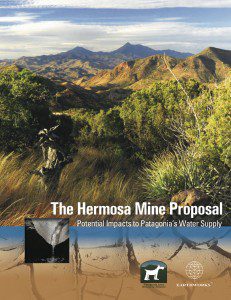 gallons of groundwater per year – up to 53 times the amount of water the town uses today — to run the mine within the upper reaches of Harshaw Creek, a portion of Patagonia’s Municipal Supply Watershed. This water consumption will lower the recharge rates for the aquifer on which the town depends, and is also likely to produce acidic runoff, requiring ongoing treatment in perpetuity.
gallons of groundwater per year – up to 53 times the amount of water the town uses today — to run the mine within the upper reaches of Harshaw Creek, a portion of Patagonia’s Municipal Supply Watershed. This water consumption will lower the recharge rates for the aquifer on which the town depends, and is also likely to produce acidic runoff, requiring ongoing treatment in perpetuity.
“If the U.S. Forest Service were to permit the Hermosa mine, this report shows it would jeopardize our community’s drinking water. And for what? For foreign shareholders’ silver,” said Wendy Russell. She continued, “This is a mine proposal that just doesn’t make sense for our community who would actually have to live with it.”
The mine is proposed within the Coronado National Forest, and therefore subject to the 1872 Mining Law. Federal land managers interpret the 1872 Mining Law to require them to permit mines, no matter if the land is better used for other purposes – like protecting a town’s drinking water supply watershed.
“Because the Hermosa mine proposal threatens area water supplies, it obviously should not be permitted,” said report author Pete Dronkers of Earthworks. He continued, “That it’s being considered at all is a strong argument for reforming the 1872 Mining Law to allow the consideration of other potential land uses.”
The report also evaluates the nature of groundwater depletion that is likely under the proposed mine plan, characterizes the impacts of such, and also analyses other known adverse impacts, such as air pollution, endangered species, and other cumulative impacts.
The report, including an executive summary, can be found at: patagoniaalliance.org/report-hermosa-mine
For more information:
Fact Sheet
Full Report
Contact:
Pete Dronkers, Earthworks
(775) 815-9936, pdronkers@earthworksaction.org
Wendy Russell, Patagonia Area Resource Alliance
(520) 477-2308, wendy@patagoniaalliance.org
* An earlier version of this press release indicated that a USGS scientist “endorsed” this report. We were informed by the United States Geological Survey that the agency only endorses their own reports and documents.

Apr 25, 2014 | Blog

May 12, 2012 | Blog

Masquerading as a bill about “strategic and critical minerals,” HR 4402 takes the nation’s top toxic polluter, the hardrock mining industry, and strips away key protections for public health, water and communities.
The current law that governs hardrock mining on public lands already allows for open access to mineral resources – for free. Under the 1872 Mining Law, gold, copper, silver and uranium are mined by multinational corporations without any return to the owner of the mineral, the taxpayer. Mining is also considered the “highest and best use” of public lands. As such, federal land managers cannot, and do not, deny mine proposals. In addition to the inadequacies of this antiquated law, the mining industry is also exempt from key provisions of some of our most important environmental laws, like the Clean Water Act.
HR 4402 makes the current environmental threats posed by hardrock mining worse. By truncating the permitting process and effectively eliminating meaningful environmental review, this legislation threatens water resources across the United States and limits the ability of mining-impacted communities to protect their land, water and health.
Mining at Any Cost
This bill allows federal agencies to exempt mining projects from review under the National Environmental Policy Act of 1969 (NEPA). NEPA makes sure that in addition to government and industry input, everyday citizens can take part in the development and oversight of projects that affect our social, economic, and environmental health.
This legislation would run roughshod over the values of transparency and public participation that are at the heart of NEPA, the process that has allowed us to find out one of the most disturbing statistics about the nature of hardrock mines: 75% of them end up polluting surrounding surface or groundwater, in spite of this environmental review.
HR 4402 caps the length of the permit process to just 30 months and allows regulators to exempt mining projects from the Equal Access to Justice Act (EAJA) as well. EAJA is legislation that makes nonprofit environmental law firms possible, which allows average Americans to protect their communities and families from pollution. Impacted communities often cannot afford lawyers, much less the litany of scientific and technical experts needed to mount a serious challenge to a multinational mining company.
A Better Way
Disenfranchising rural communities and polluting western waters is not a solution. In addition to research on recycling and alternative, sustainable sources for metals, 1872 Mining Law reform is needed to protect some of our most precious resources. HR 4402 takes us in the wrong direction. The hardrock mining industry should be clamoring to lead the world in better mining practices, not catering to the lowest common denominator.
Oppose this bill now!
http://www.earthworksaction.org/





 Patagonia – The Hermosa silver mine proposed inside Patagonia, Arizona’s Municipal Supply Watershed could deplete the town’s drinking water and perpetually contaminate area groundwater with acid mine drainage, according to a new peer-reviewed report.
Patagonia – The Hermosa silver mine proposed inside Patagonia, Arizona’s Municipal Supply Watershed could deplete the town’s drinking water and perpetually contaminate area groundwater with acid mine drainage, according to a new peer-reviewed report.






